TI CC1180小于1GHz 6LoWPAN网络解决方案
发布时间:2011-12-26 11:09
发布者:1770309616
|
TI公司的CC1180是小于1GHz 的高性价比低功耗6LoWPAN网络处理器,可运行Sensinode的成熟和稳定的6LoWPAN堆栈,NanoStack 2.0 Lite,支持NanoStack 2.0 Lite 6LoWPAN堆栈更新;无线频率在315/433/868/915 MHz ISM/SRD频段,输出功率-30dBm到+10dBm,数据速率为50, 100, 150和200kbps,工作电压2 V – 3.6 V,主要用在需要IP骨干网互连的大范围网络,自动读表,街灯照明系统,家庭和建筑物自动化,工业监视和控制和网状传感器网络.本文介绍了CC1180主要特性, 基于CC1180的6LoWPAN系统框图, CC-6LOPWAN-DK-868开发系统框图以及EM430F5137RF900电路图及其材料清单, CC1180DB电路图及其材料清单, OMAP-L138实验板电路图及其材料清单, CC1180EM电路图及其材料清单。 The CC1180 is a cost-effective, low power, sub-1GHz 6LoWPAN Network Processor that provides 6LoWPAN functionality with a minimal development effort. The CC1180 is a preloaded version of CC1110F2, where the TI third party Sensinode’s 6LoWPAN stack, NanoStack 2.0 Lite, runs on the CC1180 Network Processor. The application controlling the network processor runs on an external host microcontroller. The CC1180 handles all the timing critical and processing intensive 6LoWPAN protocol tasks, and leaves the resources of the application microcontroller free to handle the application.CC1180 makes it easy to add 6LoWPAN functionality to new or existing products at the same time as it provides great flexibility in choice of microcontroller. CC1180主要特性: Simple Integration of 6LoWPAN with Mesh Support into Any Design Running Sensinode’s Mature and Stable 6LoWPAN stack, NanoStack 2.0 Lite UART Interface to Almost any Microcontroller Running the Application Supports Updating of the NanoStack 2.0 Lite 6LoWPAN Stack Using Sensinode NanoBoot API. Over-The-Air updates are Supported, Provided that the Host Microcontroller has Enough Memory to Store the New Stack Image. Example 6LoWPAN Mesh System Overview Radio Features: 315/433/868/915 MHz ISM/SRD Bands Output power: -30 dBm to +10 dBm Date rates: 50, 100, 150 and 200 kbit/s AES-CCM Secured 802.15.4e Payloads, Using Network-wide Key Excellent Receiver Sensitivity and Best in Class Robustness to Interferers Support for FCC Narrowbanding Mandate with Excellent Performance Power Supply Wide supply voltage range (2 V – 3.6 V) Low current consumption External System Few External Components RoHS Compliant 6x6 mm QFN 36 Package CC1180应用: Large scale networks that require IP backbone interconnectivity Automated Meter Reading Street Lighting Systems Home and Building Automation Industrial Monitoring and Control Mesh Sensor Networks 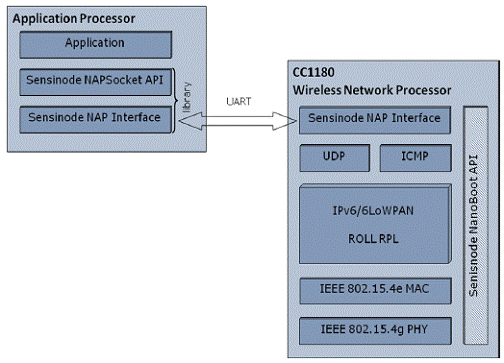
图1.基于CC1180的6LoWPAN系统框图 This document describes the TI 6LoWPAN evaluation kit for use in the 868/915MHz bands. The kit is based on hardware from TI and 6LoWPAN software (NanoStack) from TI third party Sensinode Ltd. The CC-6LOWPAN-DK-868 kit provides easy way for users to start developing their own wireless sensor network applications based on 6LoWPAN technology. There are two different APIs for communicating with the NanoStack, based on if you use CC1180 Network Processor or the CC430 SoC. The API used for CC1180 is called NAPSocket, while the API for CC430 is called NanoSocket. The kit contains a 6LoWPAN Edge Router (access point/gateway to IPv6) based on TI‟s OMAP-L138 processor. The Edge Router (ER) uses a CC1180EM as radio interface. The Edge Router is running Sensinode Ltd NanoRouter 2.0 software and can connect wireless sensor nodes running Sensinode Ltd NanoStack 2.0 lite. The evaluation version of NanoRouter 2.0 included in the kit is limited to 10 nodes per Edge Router. Included in the kit are two EM430F5137RF900 Rev 3.2 boards and two CC1180DB boards. The EM430F5137RF900 and CC1180DB boards are used as wireless sensor devices in the kit. CC430 comes with library support for Sensinode NanoStack 2.0 lite (NanoSocket [8]). This library model allows easy implementation of user applications, built directly on top of the NanoSocket library. The CC1180DB contains a Wireless Network Processor (WNP), CC1180, which handles all 6LoWPAN network communication. Connected to the WNP is a host processor (MPS430F5438A) running the user application. The hardware interface between the network processor and the host processor is UART. The software interface between the network processor and the host MCU is Sensinode NAPSocket API [12]. The NAPSocket API acts as a wrapper library to parse Sensinode NAP protocol messages [9]. The kit provides Edge Router (NanoRouter) control and testing software (Sensinode NodeView 2.0 [10]). NodeView 2.0 can be used to control NanoRouter software running on the Edge Router in real time and provides e.g. address information of the connected nodes. The control protocol is based on Sensinode proprietary UDP communication. The NodeView 2.0 tool also provides a simple way to create user‟s own java applications that are included in the NodeView 2.0 GUI in the form own separate tabs. All nodes can act as routers inside the 6LoWPAN network. The radio transceivers on the nodes are thus always on, which makes the system less suitable for battery-powered devices. CC1180主要特性: IP-based networking, enabling the “Internet of Things” CC1180 Over-Network Download (OTA), future proofs: o Device applications and network upgrades Low memory footprint; o CC1180 6LoWPAN stack is less than 32kB o CC430 6LoWPAN stack is about 17kB Sensinode 6LoWPAN software can run on all frequencies that CC1180 and CC430 support, providing a sub-GHz mesh solution. Note: The kit hardware is for use in the 868/915 MHz bands. Low development complexity, customers used to IP programming will be up and running in no time with the simple socket API approach. Configurable RF interface: o Output power: -30dBm to +10dBm o Date rates: 50, 100, 150 and 200kbit/s o RX Attenuation, for close-in systems o AES-CCM* secured IEEE802.15.4e payloads, using network-wide key. Coordinated mesh networking (modified RPL) IEEE802.15.4g/e PHY and MAC Compressed IPv6 headers (subset of IP header compression) ICMPv6 Neighbor Discovery (subset of ND) User application uses User Datagram Protocol (UDP) to send data Short address link-layer communication (based on allocated two byte address, unique under a simple 6LoWPAN, allocation coordinated by a single Edge Router) Fully automatic bootstrap process, automatic route discovery Self-healing mesh Each node replies to ICMPv6 echo requests P2P communication Synchronous frequency hopping possible, using 50 FHSS channels 
图2.CC-6LOPWAN-DK-868开发套件外形图 CC-6LOPWAN-DK-868开发套件包括: 2 CC1180DB nodes (CC1180 NWP plus MSP4305438A host MCU) 2 EM430F5137900 (CC430 SoC) nodes 1 OMAP-L138 based Edge Router Board (Gateway, running Linux) 1 Adapter board, for connection of CC1180EM to OMAP-L138 board 1 CC1180EM (radio interface to OMAP-L138 board) MSP-FET430UIF Debugger, used to debug and download code to nodes. Ethernet Cable (Crossover, for direct connection to PC) RS-232 NULL modem cable (used for Linux debug console) power supply for OMAP-L138 board, incl. cables USB cable for MSP-FET430UIF Debugger Antennas, for 868/915 MHz band Batteries (incl. holders for CC430 boards) Quick Start Guide Sensinode NodeView 2.0 Network Analyzer PC SW Software application examples 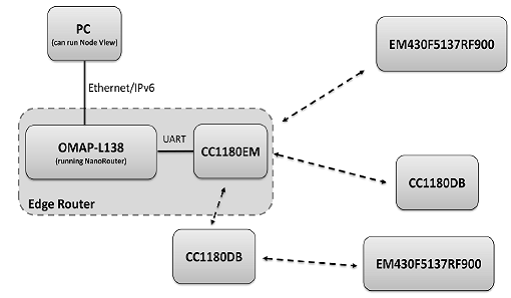
图3.CC-6LOPWAN-DK-868开发系统框图 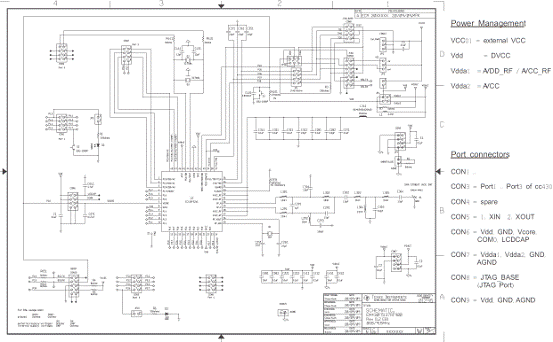
图4.EM430F5137RF900电路图 EM430F5137RF900材料清单: 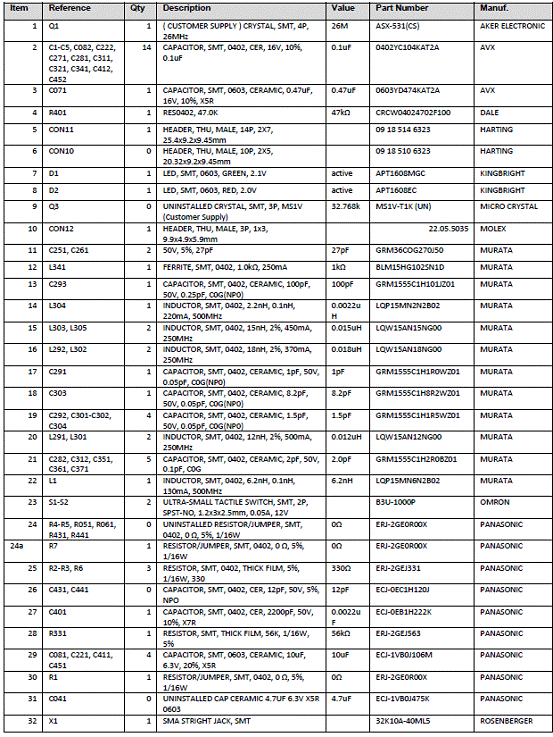

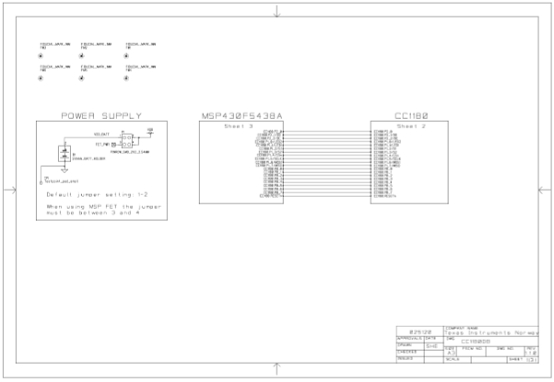
图5. CC1180DB电路图(1) 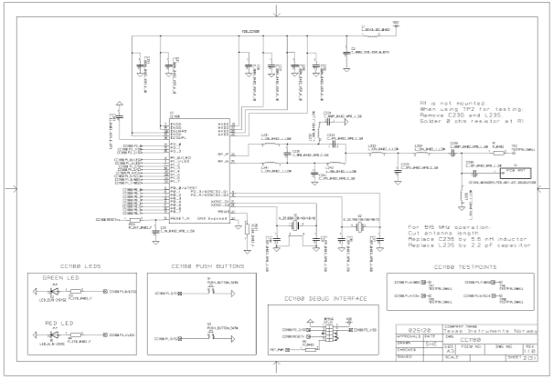
图6. CC1180DB电路图(2) 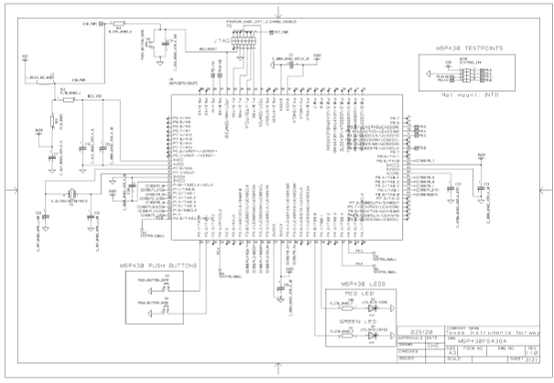
图7. CC1180DB电路图(3) CC1180DB材料清单: 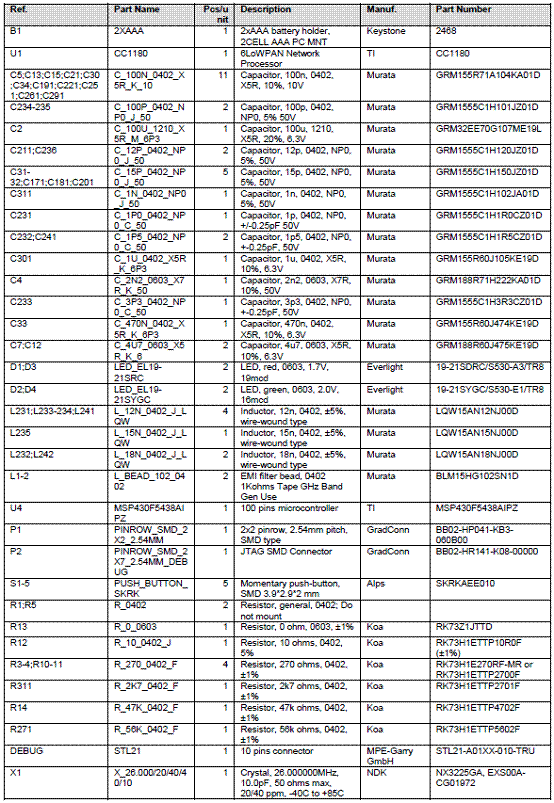

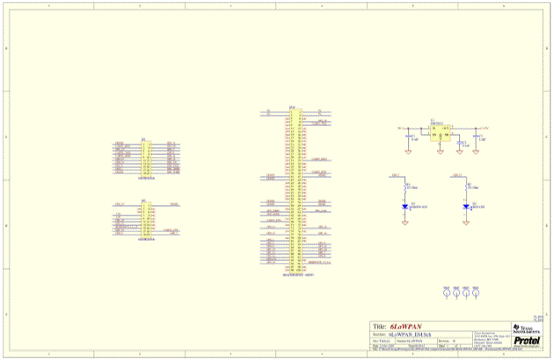
图8.OMAP-L138实验板电路图 OMAP-L138实验板材料清单: 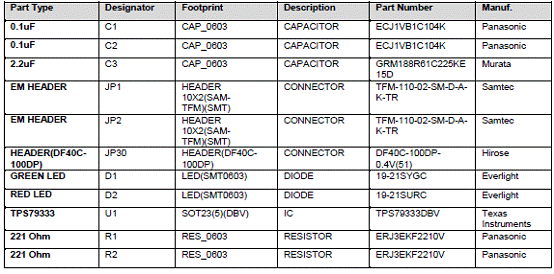
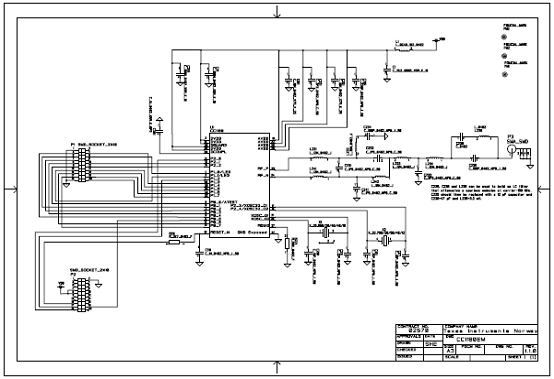
图9.CC1180EM电路图 CC1180EM材料清单: 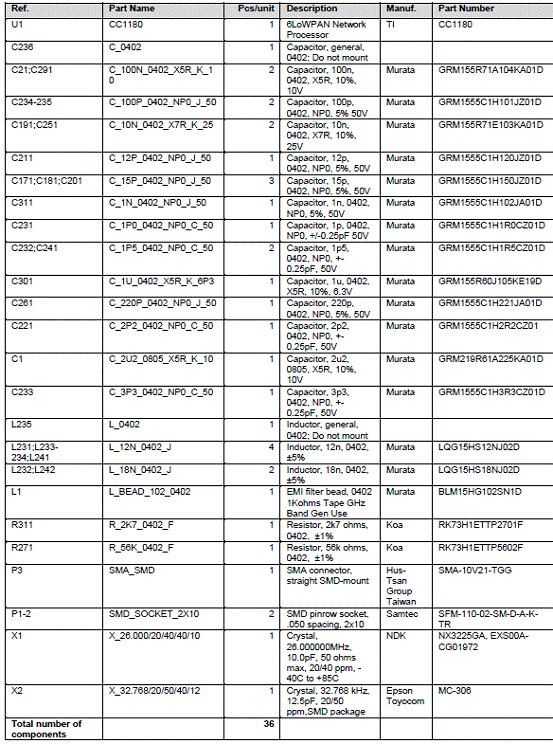
详情请见:  swrs113a[1].pdf
(787.3 KB)
swrs113a[1].pdf
(787.3 KB)
 swru298[1].pdf
(3.7 MB)
swru298[1].pdf
(3.7 MB)
|







网友评论